Review: Korg Nautilus
With nine synth engines and built-in sampling capabilities, Korg’s more affordable workstation goes deep. We dive in.
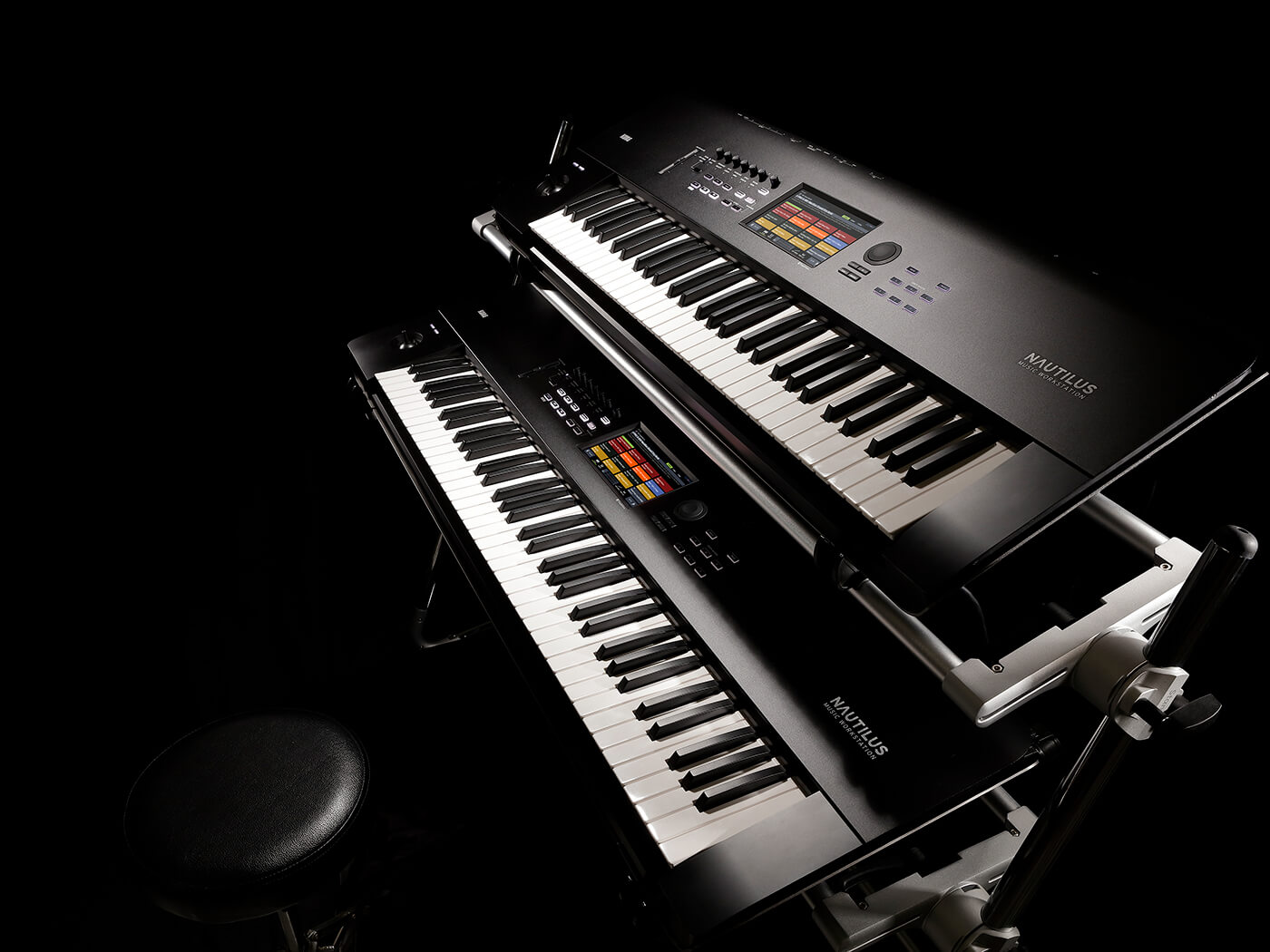
Price 61-key: £1,950, 73-key: £2,200, 88-key hammer-action: £2,550
Contact Korg
It’s tough to say which was the first synth worthy of being called a true workstation but many point to the Korg M1. Korg has continued to evolve the format since the M1’s 1988 release, with its current flagship synth, the Kronos, blurring the lines between musical instrument and computer-based DAW. The Kronos remains a popular choice for keyboard players but, as a flagship product, its features and pricing are beyond many musicians’ requirements. Korg’s new Nautilus Music Workstation aims to solve that. The instrument packs many of the same professional features as its grander stablemate without extensive hands-on controllers and at a more affordable price.
The Nautilus is available in three sizes: the top-of-the-line 88-key version features a fully weighted hammer-action keyboard, perfect for those who prefer piano-like playing; the 73- and 61-key varieties (the latter is what we have here) have semi-weighted synth-action keys. The keys have a padded, dampened feel but remain responsive to light touches. The dynamic response of the keyboard can be easily modified on the fly via one of the top panel’s rotary knobs, a surprisingly useful feature that makes it easy to match the keyboard’s response to the sound and style you’re playing.
However, none of the keyboard variants generate aftertouch, a performance controller that’s as ubiquitous as pitch bend, and that has been a standard element of practically every synthesizer keybed for decades.
There are a further six controller knobs, which perform different functions depending on which of their three modes they’re operating in. In Sound mode, the knobs control common synth parameters such as filter cutoff and resonance, in Arp/Drum mode, they control characteristics of any currently playing arpeggio or drum pattern, and in User mode, they can be mapped to mixer and sound-engine parameters on a per-patch basis. An unusual feature of these knobs is that they can be recessed to sit flush with the Nautilus’s top panel, putting them out of the way of inadvertent adjustments and accidental damage while in transit.
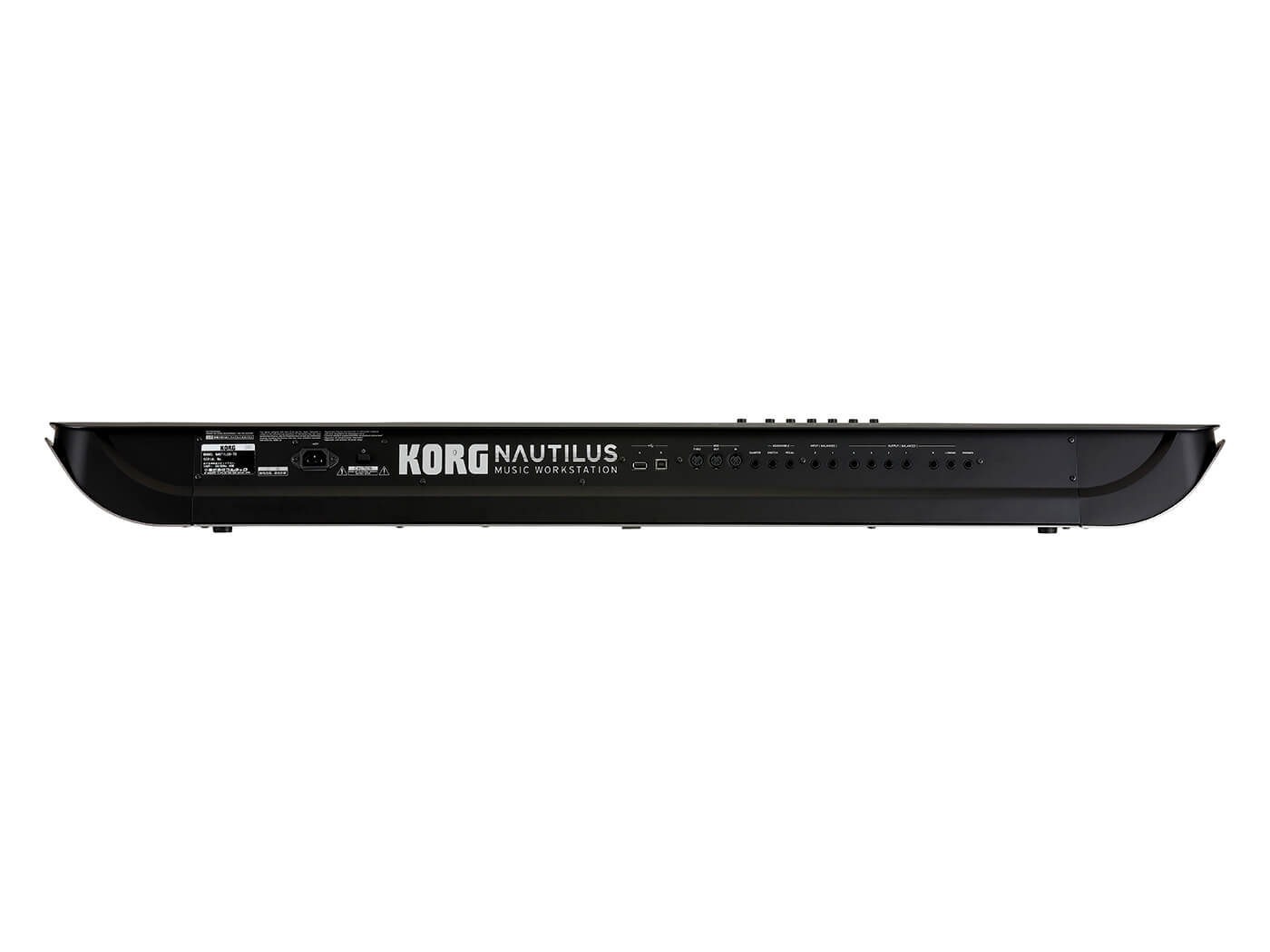
Although the Nautilus lacks the additional hands-on controls of the Kronos – faders, switches, vector joystick, etc. – operation over its controls is available via the colour touchscreen that dominates the synth’s top panel. The touchscreen takes on tasks that dedicated buttons would traditionally control, such as switching between different modes and entering values (you can also connect a qwerty keyboard to one of the Nautilus’s two USB ports and use that to input names and values). The screen is accurate and responsive, but on a few pages, the density of information and compact nature of onscreen objects make accurate selection difficult.
Located where Korg traditionally places its numeric keypads, there’s a set of six quick-access buttons. You can assign commands and functions to these buttons, such as mode switching and sequencer-transport control (but not cursor controls). Korg provides four preset mappings, and there are four user slots that you can configure yourself.
In keeping with all of Korg’s workstations since the M1, the Nautilus’s sounds are organised into programs and combinations (or combis for short). The former represents a single patch or sound. The latter is a multi-timbral mode that allows you to combine up to 16 programs into more complex sounds or for multi-channel use within a DAW. Gigging musicians will be pleased to hear that the Nautilus retains Korg’s useful Set List mode, which allows you to assemble collections of programs and combis and switch quickly between them via the touchscreen. What makes this feature even more useful is the Nautilus’s ability to switch programs and combis without cutting off a sound’s release stage or effects tails. It’s a classy touch.
Complementing these modes are drum kit and arpeggiator functions. Drum kits map different drum sounds to each key and can be linked to a built-in drum-pattern player that allows you to use predefined or custom drum parts and have them play as backings to your performances. Similarly, the arpeggiator has access to hundreds of preset patterns and allows for custom creations. The tempo of both drum pattern and arpeggiator can be dialled in using one of the control knobs, or via a dedicated tap tempo button. This button also flashes to display the current tempo. This can be useful, but the button is large, bright and occasionally distracting. You might want to tape over it.
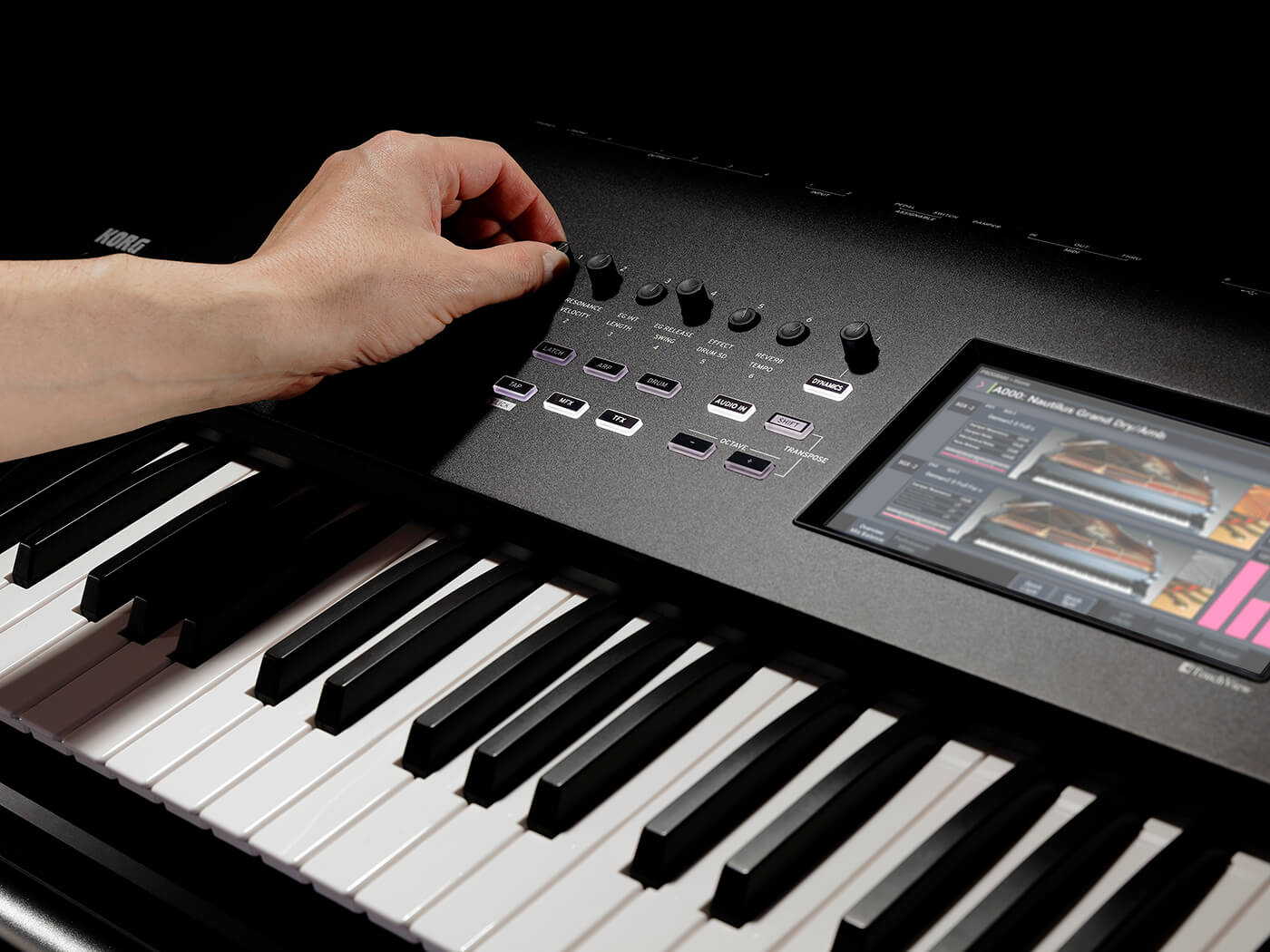
Programs can be based on one of two core tone-generation engines, one of which, EXi, can load different synthesis models. All told, this gives the Nautilus the same set of nine synthesis engines as the Kronos.
The first, HD-1, is a powerful PCM sample-and-synthesis (S&S) engine that pulls together Korg’s years of expertise. HD-1 programs can consist of one or two oscillators that can be layered or split across the keyboard. Each oscillator provides up to eight layers into which multi-samples can be loaded. Those multi-samples can come from the Nautilus’s internal ROM, from any EXs sound expansion libraries loaded at start-up, or built from your own samples. Multi-samples can be loaded from removable media such as USB sticks or created using the Nautilus’s sampling mode. The layers in an HD-1 oscillator can load wave sequences too. These are sequences of up to 64 steps in which each step can have a sample assigned to it. There’s about 2GB of RAM available for storing sample data, though this has to be shared between the EXs and user samples.
EXi-based programs are also built from one or two oscillators that can be split or layered on the keyboard. Here, however, each oscillator is based on one of eight synthesis engines. The first of these, SGX-2 Premium Piano, uses a combination of multi-samples and modelled string resonances to create a wide range of acoustic piano sounds, both grand and upright, resulting in lush, convincing sounds that are more editable and modifiable than a conventional PCM-based piano program would be.
For electric pianos, there’s the EP-1 MDS Electric Piano model. Like SGX-2, the EP-1 model makes use of samples but is more than just an S&S engine. The MDS moniker refers to Korg’s Multi-Dimensional Synthesis technology, which smooths the transition between velocity layers, resulting in a natural dynamic response to different playing velocities. The engine caters for seven flavours of electric piano and includes both amplifier and cabinet modelling for a truly authentic sound.
Korg looked to their own classic CX-3 combo organ when developing the CX-3 Tonewheel Organ model, which includes adjustable tonebars, accurate modelling of the original’s tube amplifier and seven types of rotary speaker, the speed of which can be controlled with the Nautilus’s joystick controller.
The STR-1 Plucked Strings engine uses physical modelling to create a range of struck and plucked sounds: guitars, harpsichords, clavinets, harps, bells, drums, etc. By modelling how such instruments create their sound, STR-1 can accurately recreate the timbral changes that result from different playing nuances, and do so in a way that’s difficult to achieve with sample-based engines.
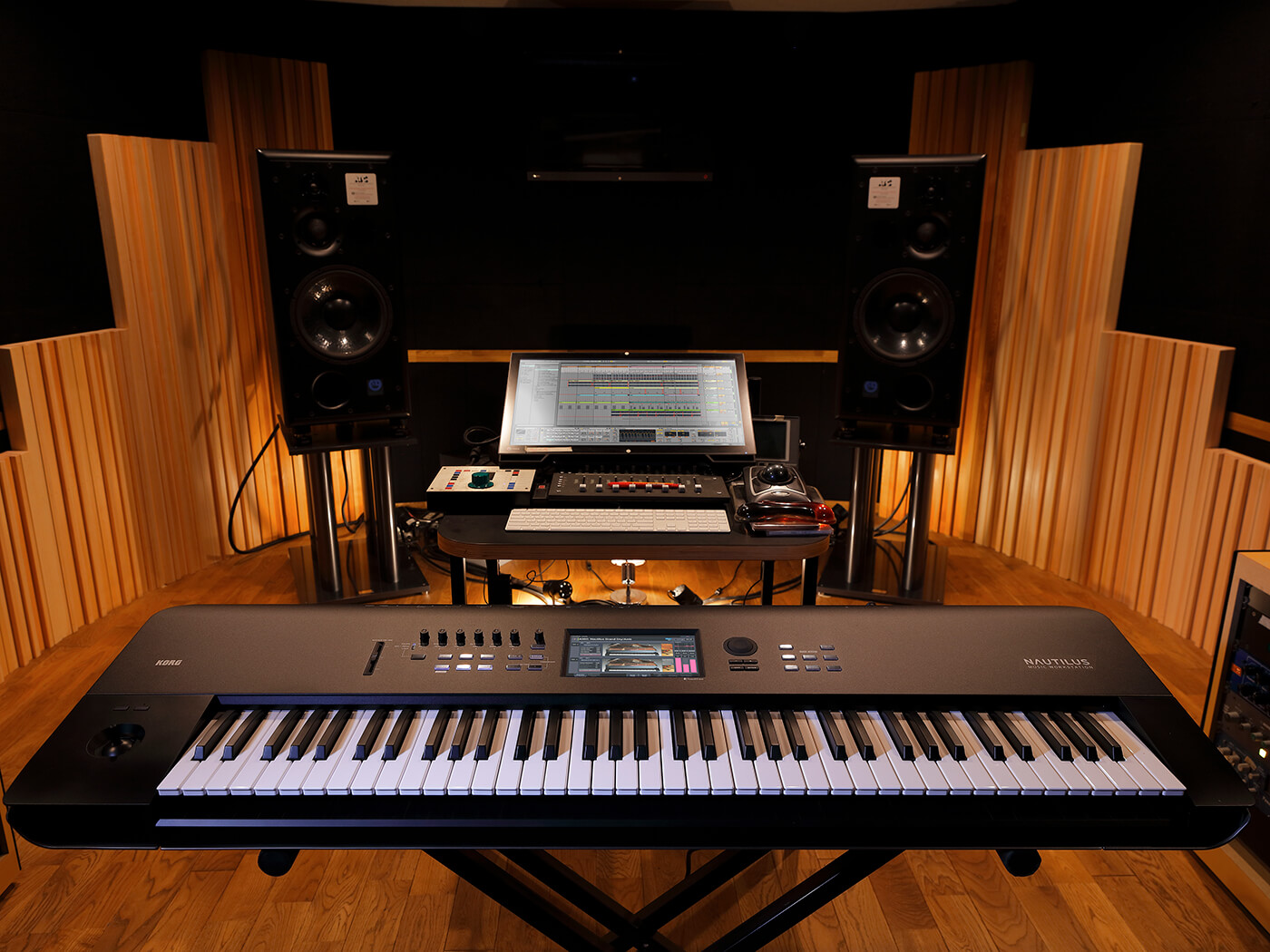
There are four EXi models that model the sound of other synthesizers. The AL-1 Analog Synthesizer was originally developed for the groundbreaking Oasys workstation and provides a modern, flexible and powerful take on analogue-style subtractive synthesis. More subtractive joy is provided by the MS-20EX and PolysixEX engines, models of two of Korg’s best-loved vintage analogue synths. The final EXi model is MOD-7, which combines Variable Phase Modulation (essentially a form of FM) synthesis taken from Korg’s classic Prophecy and Z1 synths with wave-shaping ring modulation and sample playback.
Each EXi model has its own interactive display. For example, the MS-20EX model draws on screen the controls and patch panel of the classic MS-20, which you can use as a controller for programming the synth. Meanwhile, the CX-3 model presents drawbars that you can work with, and the SGX-2 lets you adjust the lid height of the piano.
The Nautilus comes loaded with 1,920 programs and 256 combis, with a further 640 programs and 1,536 combi slots available for your own creations. You can browse the collection by category or bank or, if you know the bank and program number of the sound you want, type it in directly. The preset sounds are exceptionally well designed and polished, with a good amount of this coming down to the quality of the Nautilus’s effects processing, which uses Korg’s REMS circuit-modelling technology. Each program, combi or sequence supports 12 insert effects, two master effects and two total effects. Master effects are essentially send effects, and total effects can be considered a master bus insert effects. Effects routing is surprisingly flexible and there’s a wide choice of effects available.
The Nautilus’s Open Sampling System aims to simplify the process of sampling from any available source. External signals can be fed in via the synth’s two inputs or USB audio from a computer. The inputs are provided as jack sockets but can be switched between line and mic level operation (there’s no phantom power so you may need to use a separate mic preamp). Alternatively, you can sample directly from within the program or combi mode.
Sampling directly to RAM is performed at 48Hz/16-bit, but you can increase this to 24-bit if sampling directly to disk instead. Samples must be loaded into RAM to be used in programs, drum kits or wave sequences and are dithered to 16-bit when used in this way. However, they can play from disk in full 24-bit glory when used as audio tracks in the sequencer. This direct-to-disk sampling comes into its own when you want to capture the sound you’re currently playing, as it allows you to quickly record ideas without having to switch to and configure the sequencer or faff around getting things ready in your DAW.
Once captured, you can edit and prepare your samples in all the standard ways: editing start and end points, cutting and pasting, truncating, looping and so on. There’s also time-stretching and loop-slicing functions, with the slicing playback pattern available to load into a MIDI track in the sequencer. You can even stack up samples into a single multi-sample, which can be used as the basis for a new program patch. Overall, then, the Nautilus’ sampling capabilities tie in exceptionally well with the rest of the instrument – not as powerful perhaps as a dedicated software sampler but useful nonetheless.
The Nautilus’s sequencer provides 16 MIDI tracks and 16 audio tracks. It’s a workable system, but overall there are too many compromises forced by the limitations of the Nautilus’s form, especially compared to the features of a computer-based DAW. That said, the Nautilus comes with bonus software that includes Korg’s own Gadget 2 LE DAW, Reason Lit, and five plug-in instruments.
With its large feature set, it isn’t easy to draw a single conclusion about the Nautilus. Compromises have been made to make the workstation more affordable than the Kronos and, on the whole, such compromises are easy to live with, even if the quick-access keys could do with a larger number of functions available to them and the omission of keyboard aftertouch feels like a step too far. On the sequencing side, it’s a little anachronistic to build such a thing into a synthesizer given that these days we carry computers in our pockets that are more powerful than what was available when Korg first minted their workstation template. But the sequencer isn’t without its uses. However, it’s on the synthesis front that the Nautilus does its best work, offering astonishing flexibility, superb sound quality, and brilliant sound design throughout.
Overview
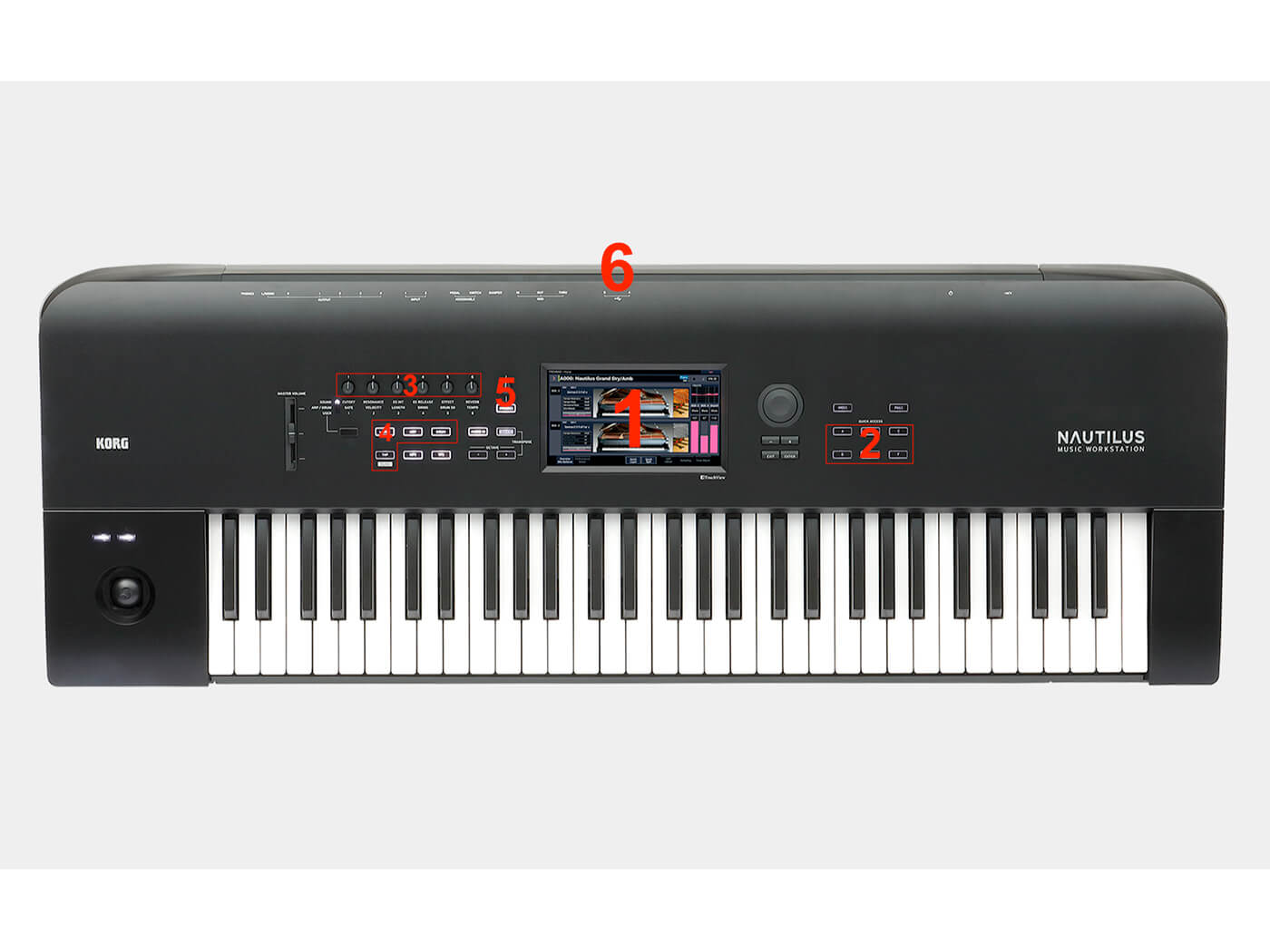
1.Colour touchscreen display provides access to all of the Nautilus’s functions. When using EXi-based programs, the panel can display interactive graphic edit panels for controlling, for example, the tonebars of an organ or the patching of an MS-20.
2. The quick-access buttons can have functions assigned to them and make up for the loss of dedicated mode-selection and sequencer-control buttons. You can use Korg’s predefined mappings or create your own.
3. The six real-time control knobs allow you to make adjustments to the sound as you play. They also provide hands-on control over the arpeggiator and drum-pattern player. Pressing a button causes it to recess into the casing, another press pops it up again.
4.
Dedicated buttons for enabling and latching the arpeggiator and drum pattern are located here. There’s also a dedicated tap-tempo button, which flashes bright white to ensure you never miss its visual tempo cue (even if you might want to).
5.
This rotary control allows you to set the dynamic response of the keyboard as you play. It’s not uncommon to be able to change a keyboard’s responsiveness but being able to do so on the fly lets you match the response to the sound and style you’re playing.
6.
There’s one USB port for interfacing the Nautilus with a computer and another for connecting external USB media, class-compliant MIDI controllers or an alpha-numeric keyboard for typing in names and values.
Key Features
- Nine synthesis types including acoustic piano, electric piano, tonewheel organ, analogue synth, MS-20 and Polysix
- Built-in sample capture and editing capability
- 128 set lists, each with 128 slots
- Effects: 12 inserts, two sends, two master
- 16-track MIDI sequencer and 16-track hard-disk recorder
- 60GB SSD drive
- Dimensions:
88 key: 143.7 x 38.7 x 13.9 cm
73 key: 122.7 x 38.6 x 11.6 cm
61 key: 106.2 x 38.6 x 11.6 cm